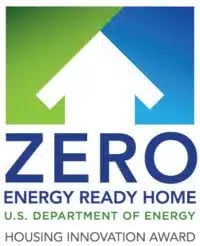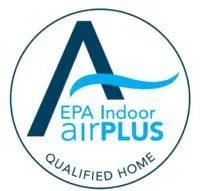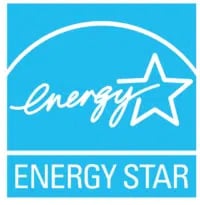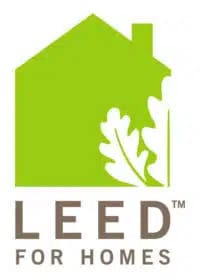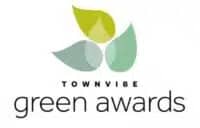Green building is a broad name for a wide range of green building approaches and industry standards. Green homes provide a surprisingly large number of benefits to homeowners and are good for the environment.
Different people use different terminology for green building and green homes, like “high performance homes” or “sustainable building.” No single formal standard exists for green building but the principles of sustainability—using renewable, non-polluting, and carbon-smart building products and materials, using clean, renewable power, etc.— are incorporated into all green home building standards.
The objective of using green building for home building and home renovation is to create better homes that provide benefits that conventional homes don’t and can’t.
There are Many Shades of Green Building
Homes are considered “green” to varying degrees. Some people use the term “deep green” for a home that utilizes many green methods and technologies, to a greater extent than most.
Based on YOUR own personal priorities and objectives for building green, you can select the shade of green that’s best for you. Established green building standards already exist to fit most people’s goals and priorities, and BPC Green Builders can build your home to meet any or all of them, including:
- EPA ENERGY STAR for Homes®
- DOE Zero Energy Ready Homes
- Passive House Institute US (PHIUS)
- LEED for Homes
- ILFI Living Building Challenge
- Health House (*No longer active)
- National Green Building Standards
- Net Zero Energy Home
- Positive Energy Home
ALL BPC homes are built to meet or exceed one or more of these standards.
Are All Homes Sold as “Green” Really Green?
Unfortunately, they are not. More and more people are looking for energy efficient and green homes, so some builders—either as window dressing or because they don’t have proper training—add a few “green features” and call the home green. But if they don’t add them properly and the house is not green otherwise, then the home is not really green.
For example:
- Just using some ENERGY STAR rated products in a home doesn’t mean it is really green.
- Using spray foam insulation can help to make a building more air-tight and increase the overall insulation value. However, unless a continuous layer of insulation, not interrupted by the framing, is added, a home will still leak heat through the framing itself, which often makes up 25% of the exterior wall area.
- Adding photovoltaic panels to a conventionally built home does not mean it is really green.
- The best energy efficient windows, if not properly installed and sealed, will not be of much help overall if air is flowing around them or through walls.
When “green” is used strictly as a marketing tool, it is called “green washing.”
Green Building Glossary
We have created a helpful glossary of green home and green building terms to aid clients who are researching or considering building or renovating a green home.
The Top Benefits Green Homes Built by BPC Deliver
Our green building services deliver many benefits only green homes can offer. These green home benefits fall into five major categories and various subcategories as shown.
BPC Green Homes:
1. Live Better
Our homes are healthy, comfortable, and quiet. They are well-designed in every way, based on our client’s unique needs, preferences, and desires.
LEARN MORE ABOUT THE HEALTH AND COMFORT BENEFITS OF BPC GREEN HOMES
2. Perform Better
Our homes utilize advanced technology and the latest building science strategies, resulting in HERS ratings that prove they use much less energy than conventionally-built homes, with some using zero net energy and others that produce even more energy than they use each year.
3. Last Longer
BPC homes are of exceptional quality and inspected by third-party, independent verifiers to meet the highest performance standards. BPC homes are more durable, requiring fewer repairs and having longer useful life cycles.
4. Cost Less to Own
BPC green homes reduce energy bills, some to zero and some to the point where they generate income from surplus energy. Because BPC homes are engineered and specified to be durable, BPC homeowners save money on repair and replacement costs of systems and other parts of their homes. Studies have also shown that green homes have higher resale value.
LEARN MORE ABOUT THE ECONOMIC BENEFITS OF BPC GREEN HOMES
5. Are Environmentally Responsible
We incorporate sustainability best practices into the design, construction, selection of building products, and materials sourcing for all homes we build. BPC homes help fight climate change and reduce the nation’s dependence on fossil fuels, which is good for the planet.
LEARN MORE ABOUT THE ENVIRONMENTAL BENEFITS OF BPC GREEN HOMES
What Makes a Green Home “Truly Green”?
Building truly green homes require a comprehensive understanding of what makes a home green and how green it is, including factors such as:
Orienting your house with regard to the sun and prevalent wind patterns can make it more pleasant, comfortable, and energy efficient.
In most cases, it is environmentally preferable to renovate (and expand, if necessary) an existing home rather than build a new one. However, if the home is in poor condition and/or the desired changes are massive, it may be more cost-efficient and energy efficient to start anew.
There are many design and engineering approaches that are used for green homes such as dual purpose spaces to reduce the size of a home, extended roof overhangs for solar shading, thicker wall and roof assemblies for optimized insulating values, and use of natural light vs. artificial, among many others.
Optimized insulation values, high efficiency doors and windows, well thought out air sealing strategies, heat exchangers, insulated hot water pipes, and the use of properly sized high efficiency HVAC and water heating equipment are all major components of green home building. So are the type of lighting and the use of natural light and heat sources. Smart home technology can be utilized to monitor and make adjustments to everything that uses power.
When evaluating the environmental impacts of different building materials, you need to factor in energy used to produce the materials, pollution caused, impact on endangered plants, and waste generated. In general, the following guidelines and product selections should be followed:
- Home design that uses less material while achieving better performance
- Recycled materials, when possible
- Products that require less energy to grow, extract, and manufacture
- Materials that are produced closer to home and therefore use less energy to bring to your home
- Engineered wood products over products made from old growth trees
- Materials that are durable
- Materials that don’t leach toxic chemicals into the soil
- Materials that, when a home is eventually demolished, will not add toxic materials to the landfill
- Materials that require minimal maintenance and use of chemical finishes and/or cleaning products
To get the most benefit from green materials and products, your green home has to be constructed properly and carefully by crafts and tradesmen who know how to construct or renovate a green home for maximum benefit. Not all construction workers have the knowledge or skill to build like this or meet the special standards needed.
Using clean, renewable and sustainable sources of energy can offer substantial benefits. This energy can be purchased from the electric grid or created using design and technology right at your own home.
Solar Energy
With green homes, solar energy can be harnessed in many ways to save you money and minimize the carbon-based energy required to operate a home and its systems. One simple way is to locate the house with the largest glass area facing south. This captures the sun’s heat in the winter.
Photovoltaic panels, which are cheaper and more efficient than ever before, can also be used to generate electricity for use in the home and to feed surplus power back into the grid, for which power companies pay or credit you.
Finally, solar hot water panels produce hot water for domestic use, as well as to help heat the home.
Heat Pumps
Heat pump heating/cooling systems are used most often these days for green homes. These systems extract heat from the air or the ground to heat the home in the winter and dump heat into the air or ground in the summer. These are highly efficient electric systems with low operating costs.
Wind
Wind energy is by far the largest source of sustainable energy in the US. In our area, wind energy can sometimes be generated on site or purchased from the power company.
Water Conservation
Low-flow plumbing fixtures represent a great starting point for water conservation, but there are many other options. For example, your home could include a gray water system, which recaptures water from all uses (other than toilets) for re-use in an irrigation system. Other options include collecting and storing rainwater for uses such as bathing and washing clothes and using modern hygienic composting toilets, which eliminate the need for fresh water to process human waste.
Other Green Home Considerations
Some aspects of making your home green are not as obvious as others. Here are some of the other factors that can contribute to making your home even greener.
A basic and important consideration for building a green home is its size. Larger homes require more energy to heat and cool. They also require more energy and material to build and maintain.
If you don’t already have a parcel of land to build on, these are some things you may want to consider. Proximity to work, services, and schools reduces the energy used and pollution generated for everyday traveling. Smaller lots reduce the amount of energy needed to maintain the property, including pollution caused by lawn mowers and snow blowers, as well as the use of water, fertilizers, and pesticides to maintain a large lawn.

